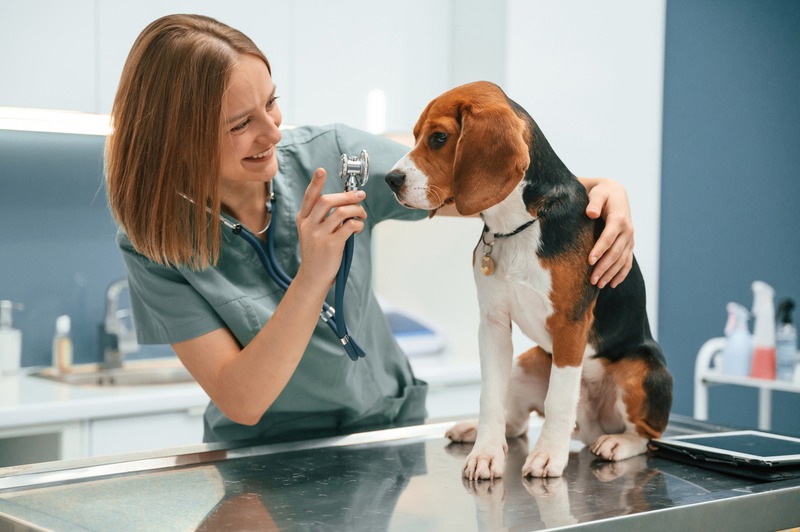When caring for our furry friends, we want to give them the best possible chance at a healthy and happy life. For this to happen in veterinary medicine, there’s a crucial aspect that can sometimes be overlooked – the importance of collaboration between internal medicine veterinarians and surgeons. Now, you might wonder why this teamwork is such a big deal. Let’s break it down in a way that’s easy to grasp without all the medical jargon that makes you scratch your head in confusion.
How Internal Medicine Specialists and Surgeons Collaborate
First, let’s talk about what these professionals do. A veterinary internal medicine specialist is like a detective. They’re the ones who figure out what ails your pet when the issues are complex or involve multiple body systems. On the other hand, surgeons are the ones who step in when a scalpel or a more hands-on approach is needed to fix the problem.
Think of it this way – you wouldn’t want a detective working alone to solve a case without the help of the forensic team, right? It’s kind of the same in veterinary medicine. The internal med vet and the surgeon work together to ensure your pet’s health puzzle is correctly pieced together – from identifying the problem to effectively carrying out the solution.
Enhanced Diagnostic Accuracy
While internal med vets have an array of diagnostic tools at their disposal, collaborating with surgeons can significantly enhance the accuracy of these diagnoses. Surgeons bring a different perspective, and sometimes, they might catch something through their pre-operative assessment that an internal med vet might not. This partnership ensures a second set of skilled eyes evaluates your pet’s condition before making any decisions.
Custom-Tailored Treatments
Every pet is unique – and so should their treatment plans. When we have an internal medicine vet and a surgeon at the table, they can tailor a treatment that fits your pet’s specific needs like a glove. This bespoke approach can lead to better recovery rates and more effective outcomes.
The Importance of Integrative Care
With integrative care, your pet’s health is viewed holistically. Imagine juggling all the aspects of your pet’s wellbeing single-handedly – it’s tough. But when you have a team, each member juggling a specific ball, it becomes a synchronized effort that guarantees nothing falls through the cracks. That’s the beauty of collaboration between different veterinary professionals.
For instance, if your pet needs surgery, their overall health must be in the best shape to handle the procedure and recover well. A veterinary internal medicine specialist stabilizes chronic conditions or manages acute issues before the surgeon takes over. This preparatory work can make all the difference in how well your pet handles the operation and heals.
In-depth Post-operative Care
Let’s not forget what happens after surgery. The internal med vet remains an integral part of the recovery process, ensuring that the healing goes smoothly and managing any internal issues that might arise. Together, both vets can address post-operative complications quickly and with greater precision.
Consistency in Follow-up
When it comes to follow-up care, consistency is critical. Your pet’s medical history, response to treatment, and recovery progress are closely monitored and communicated between the internal medicine vet and the surgeon. This seamless exchange of information fosters a consistent care experience for your pet.
Seeking the Best for Your Pet
We all want our pets to access the best possible medical care. Resources such as dog surgeons in White Settlement, TX, work closely with internal medicine specialists to provide comprehensive care tailored for each pet. It’s about pooling knowledge and expertise to get the best results.
Preventative Care and Overall Health
Part of providing the finest care also means focusing on prevention. While surgeons and internal medicine vets handle complex cases, preventive measures like routine pet dental care are equally necessary in maintaining your pet’s health. By working collectively, vets can guide you on the best practices to keep your pet away from the operating table in the first place.
Shared Knowledge Means Better Solutions
When vets collaborate, they also share knowledge and experiences that can lead to better solutions for pet health problems. This collaborative learning environment ensures that veterinarians are up-to-date and continually improving their approaches to care.
Let’s outline a few key benefits of this collaboration:
-
Whole-pet approach for optimized care
-
Improved diagnostic precision
-
Combined expertise in complex cases
-
Consistent and comprehensive post-operative follow-up
-
Shared knowledge and continuous learning for vets
Breaking Down Barriers to Collaboration
While the benefits of collaboration are clear, there are barriers, too, such as communication gaps or logistical challenges. But with technology on our side and a shared goal of pet wellbeing, these obstacles are becoming a thing of the past. Regular meetings, shared electronic health records, and a co-management mindset contribute to a cohesive medical team for your pet.
Embracing Technology and Communication
Technology plays a pivotal role in ensuring smooth collaboration. Electronic medical records that are readily accessible by internal med vets and surgeons enable the quick exchange of data, ensuring that every team member is on the same page with your pet’s care plan. In addition, telemedicine is opening new avenues for vets to collaborate and consult with one another, regardless of physical distance.
Final Thoughts
Internal medicine veterinarians and surgeons should collaborate because they improve diagnosis and care by working together. This teamwork results in better overall health outcomes for pets. Their combined expertise ensures animals receive comprehensive care before and after surgery, which is crucial for a long, healthy life. At the vet clinic, remember that a dedicated team of experts is working together to help your pet. The partnership between different veterinary specialists highlights that cooperation is key in animal healthcare.


